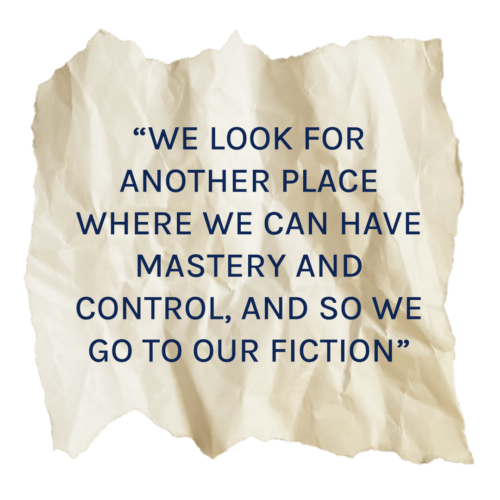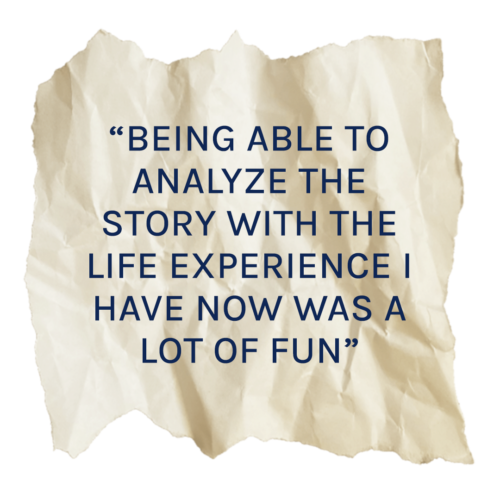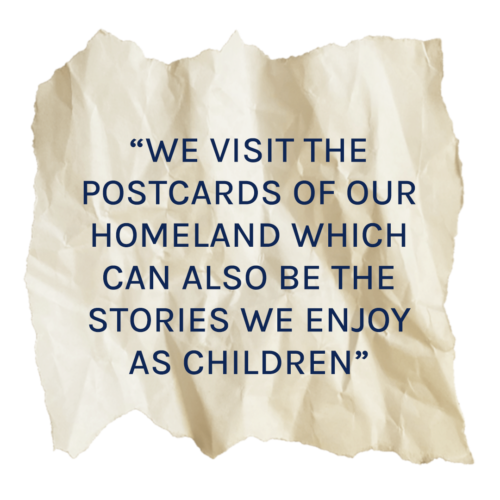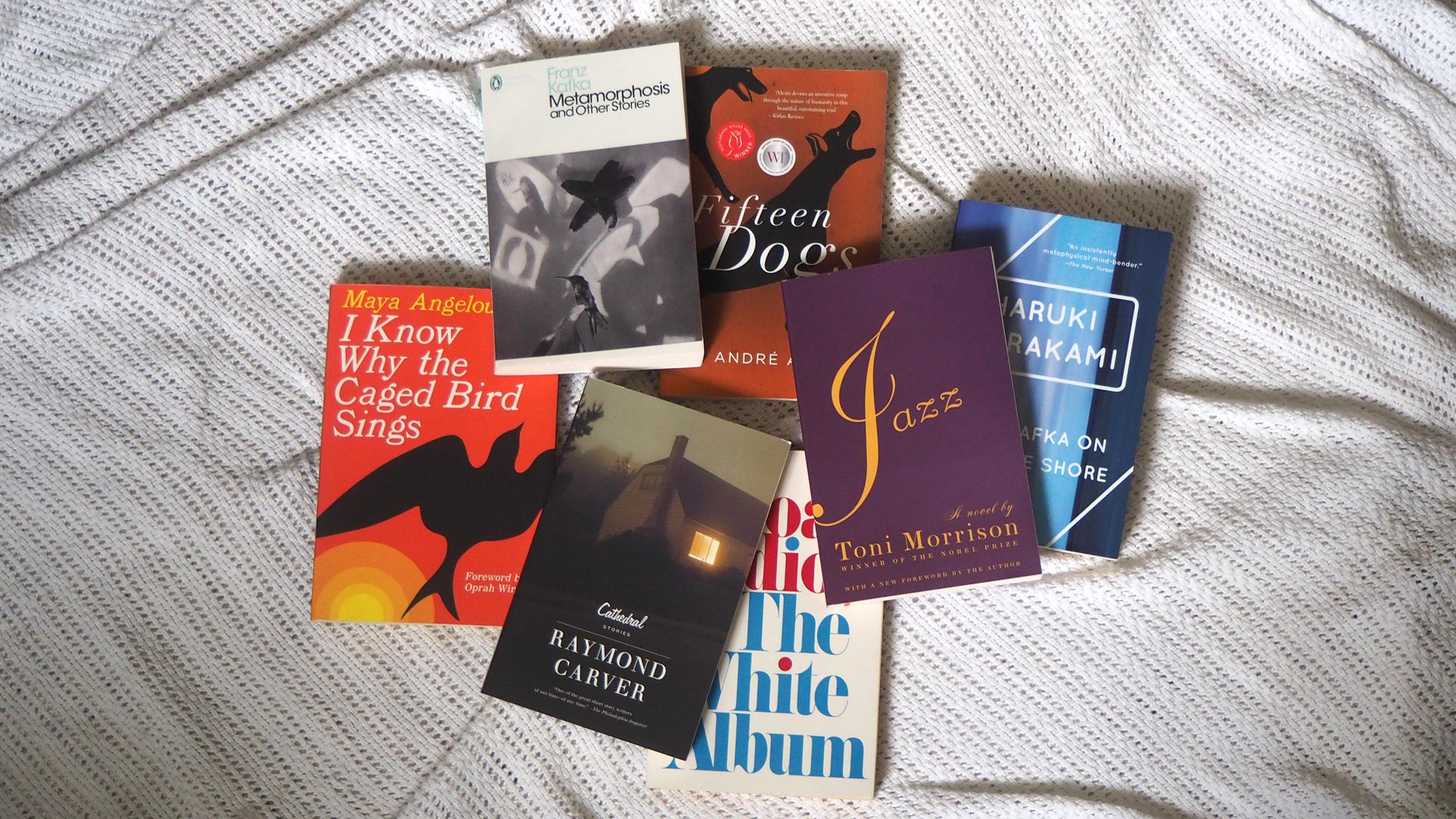For many Ryerson students, reading for fun and leisure brought a sense of security during uncertain times
Words by Samira Balsara
Visuals by Jes Mason and Vanessa Kauk
It was another long overnight shift at the hospital and Krista Shoebridge was deeply engrossed in her novel as the time passed slowly. With her nose in a book and her feet propped up on the stool in front of her, Shoebridge spent her shift sitting at the nursing station reading New Moon, the second novel in the iconic Twilight series and losing herself in the story until it was time for her to do her rounds.
“I looked up and it was five in the morning. I was like, ‘Oh, I gotta go take a peek and make sure people are doing OK,” she remembers thinking.
An avid reader as a child and pre-teen, Shoebridge was a huge fan of the Geronimo Stilton series and eventually became “obsessed” with dystopian fiction like Divergent and The Hunger Games. But as her homework became increasingly stressful in high school, she started spending all of her free time cooped up in the library trying to get high grades so she could get into university. Slowly, reading for fun and leisure became difficult and then non-existent.
However, over the pandemic, the third-year Ryerson nursing student needed something to do to pass the time on quiet nights while working at the hospital—so she started reading. Shoebridge worked as a clinical extern, someone who provides direct care to patients and families under the mentorship of a registered nurse. She decided to start with books she’d already read before, breezing through one of her favourite series from when she was younger: the Hush Hush saga, a series about a teenage girl who falls in love with a fallen angel.

“That’s where I started tumbling more back into it. This is something I can do every night,” she says.
When the COVID-19 pandemic hit and put a pause on life, boredom struck many Ryerson students. With nowhere to go and nothing to do, the best solution to stay entertained was to find an activity to do in your own space and home. For many students, re-reading books they once loved in their youth became the perfect way to pass time and bring back fond memories. Many students say picking up a book again turned into more than just a one-off activity and, instead, reignited a love for reading that many say they had lost.
According to an Angus Reid survey from April 2020, 40 per cent of Canadian adults said they started reading more with all the free time available in the early days of the pandemic. October 2020 data from BookNet, a non-profit organization in the Canadian book industry, revealed that 76 per cent of Canadians said they mostly read “to enjoy or relax”—an increase from 2019, where just 59 per cent of respondents said they read for enjoyment over other purposes.
Sarah Henstra, an English professor at Ryerson University, says people gravitated toward old books to stay in control during the pandemic. When you revisit an old book, TV show or movie, you know what will happen next. In a time of uncertainty during the pandemic, there was a lack of control over our routines. So, familiarity with an old book was likely to bring back a sense of nostalgia, comfort and control, she adds.
“We look for another place where we can have mastery and control, and so we go to our fiction, the fiction we already know. That’s what’s comforting,” she says.
Social media also popularized reading over the pandemic mainly due to a subcommunity on TikTok. The #BookTok hashtag on the app has a combined total of 42.8 billion views, with creators discussing their favourite books and giving recommendations to viewers—starting or reigniting the hobby for many people.
It’s easy to find security in the things that once brought us happiness as children, Shoebridge adds. “We needed that comfort. A lot of people just gravitated back toward something we could do safely.”

uring lockdown, Brenna Nanie was sick at home and stuck in bed at their parents’ house with nothing to do. To kill time, they began looking through their old books in hopes of finding something that would catch their interest and make them feel better.
“I needed something to do to pass the time. I don’t like sitting around,” says the third-year creative industries student.
While sifting through the books on top of their wooden dresser, Nanie decided to re-read their favourite series from when they were in middle school: Warrior Cats. Written by Erin Hunter, the series follows the adventures of feral cat clans. As a kid, Nanie was “absolutely enamoured” by the series and says it was just as entertaining the second time around.
“I’m revisiting these memories I had as a kid and being able to analyze the story with the life experience I have now was a lot of fun,” they say.
Nanie enjoyed re-reading Warrior Cats so much they even bought a hardcover set through eBay to add to their personal library because it “felt nice” to own some of their own copies.
Buying books has increased during the pandemic, as bookstores saw a growth in the amount of books being purchased over the first wave of COVID-19. According to 2021 data from NPD BookScan, print book sales had their best year in a decade, with 800 million books sold. Adult fiction was the leading growth area in 2021, contributing to more than half of the total market gains with 174 million unit sales.
Ana Speranza, a bookseller at Queen Books in Toronto, says book sales during the months of March to June 2020 were “quite extraordinary.” With a five-person team running the store due to social distancing, Spernaza says her co-workers worked hard to make sure the store ran smoothly.
Speranaza says many customers came in looking to complete existing book collections, pick up copies of their childhood favourites or look for new titles from their favourite authors to add to their libraries.
Some consumers purchased books like Garth Nix’s Sabriel and The Song of the Lioness series, which are young adult fantasy novels first published in the 1980s and late ‘90s. Sperenza also says some older books were being re-issued or re-printed by publishers, due to their greater demand.

“This shows there’s a larger trend outside of the nucleus of our store,” she says.
Besides rebuying old books, Speranza says book sales were also impacted by social justice movements that occurred in the last two years. During the height of the Black Lives Matter protests, several customers came in looking for books about anti-racism and texts by Black authors. In the summer of 2021, when hundreds of unmarked graves of Indigenous children were discovered, sales of books related to Indigeneity, reconciliation and decolonization increased.
In fact, a CBC article from June 2020 reported that sales on anti-racism books saw a spike following the police brutality protests. An article from The New York Times published around the same time, revealed almost seven out of 10 best selling books on Amazon and nine out of 10 at Barnes & Noble were about race and anti- racism. Books like How to Be an Antiracist by Ibram X. Kendi, White Fragility by Robin DiAngelo and So You Want to Talk About Race by Ijeoma Oluo all topped the list.
Social media also affected book sales. And bookstores like Queen Books saw the impact of the movement. They even occasionally create mini-sections in the store dedicated to the most popular BookTok reads like The Seven Husbands of Evelyn Hugo by Taylor Jenkins Reid and novels by romance author Colleen Hoover.
“It becomes really clear when a book has made it big on TikTok because we all of a sudden get a huge influx of people coming in and asking for that title,” Speranaza explains. “So we will try to order up and we’ll have those books easily available.”
Alongside Warrior Cats, Nanie also started reading books like Never Cry Wolf by Farley Mowat and Annihilation by Jeff VanderMeer. Nanie also says they started to actually buy books rather than checking them out from the library after reading a manga series, called The Girl from the Other Side, because they enjoyed it so much and wanted to have their own collection.
For Nanie, revisiting old books, especially the Warrior Cats series, was almost a “secret embarrassment” as the books are intended for children, they say. At the same time, however, it was a form of escapism and a way to revisit their past.
“A lot of people are revisiting old things that made them happy as kids,” says Nanie. Even though there’s all these terrible things going on in the world, it brings a sense of joy and support, they say. “Being able to reignite passions that had made you happy as a kid when you’re a teen or an adult brings comfort.”

hen homework piled up for Myuri Mohan in Grade 10, it left her with very minimal free time to enjoy her hobbies. As a child and teen, Mohan was a huge fan of the Geronimo Stilton and Percy Jackon series. She loved the series because she would feel so enticed and captivated by the words on the page. But soon, the feeling of being immersed in the stories disappeared and her leisurely reading morphed from novels to webtoons and, occasionally, comic books.
“I completely stopped reading novels, except for the purposes of school,” she says. “I still enjoyed reading them…but it was at the point where if I had to read a book, it would only be because it was course mandated.”
Mohan, a second-year business management student, attributes her loss of reading as a hobby to social media use. Instead of reading at the library until the evenings like she did as a child, she’d spend her time scrolling through Instagram or watching YouTube and Netflix once her busy school days were over. She says her attention span also shortened due to the fast-paced nature of the apps she used, making activities like reading a lengthy novel more difficult and time-consuming.
A 2015 study by Microsoft revealed that the human attention span has dropped to eight seconds, decreasing by almost 25 per cent compared to the early 2000s. This phenomenon, known as the “goldfish effect,” is partially due to the rise in social media and pervasive use of technology in people’s daily lives. It is a term used to describe how short human attention spans can be—like a goldfish.
Henstra says the use of phones has also impacted people’s reading levels. “We’re always on our phones,” she says. In our downtime, like when commuting, people opt to watch YouTube or spend time on social media. The increased screen time has made it difficult to read as much as we may have used to.
Henstra notes that it’s not necessarily all about the overuse of social media, but also has to do with the habit of always having our phones with us rather than a paperback novel. She says paperback novels were invented to be carried around and read whenever convenient—they were cheap to create, light and a destructible alternative to the traditional leather-bound book. People could carry them on the train and read without worrying about ruining the books.
On top of social media and phone usage, losing passions and growing out of old hobbies is something a lot of people go through as they grow up. Henstra says this is because humans are expected to “give up a lot of our fantasy life to be realistic” as we become adults, pushing childhood habits and hobbies away.
When the pandemic hit and Mohan had more time on her hands, she began to look through her little brother’s book collection, hoping to find something fun to read. She eventually landed on The Diary of a Wimpy Kid series, which was easy to breeze through and brought back feelings of childhood nostalgia.
“It’s nice to be familiar with a story that you kind of already know,” she says. She liked the short books because they didn’t require too much concentration.

Going back to the things we once loved as children and craving nostalgia in times when life seems so scary is almost natural, says Henstra. The roots of the word “nostalgia” put this feeling into perspective. ‘Nostalgia’ comes from the Greek word “nóstos” which means “a sickness for home,” she explains. So when we yearn for activities that remind us of childhood, we truly are longing for the feeling of home. She says nostalgia and homesickness are very closely related in terms of the roots of both concepts.
“In some ways, we are sort of homesick for that familiar place of our childhood, but also that familiar time. So we visit the postcards of our homeland which can also be the stories we enjoy as children.”
Now, Mohan has regained her interest in reading and is setting goals for the amount of books she wants to read yearly on GoodReads to keep track of her progress. Aiming for one book a month, she’s gotten recommendations from her friends, who are constantly getting suggestions from BookTok. She also actively engages with other readers, talking in-depth on subreddits and Discord servers about books and becoming part of a community.
Over the pandemic, Mohan devoured a Manga called The Promised Neverland, a series that follows a group of orphaned children in their plan to escape from their orphanage after learning a dark truth behind its existence. Mohan was entranced by the elements of fantasy and adventure in the book, as well as its life-like components.
She says the depiction of the children was more realistic compared to other mangas she’s read in the past. According to Mohan, manga can often forget about the innocent way that children and young teens view the world—she likes The Promised Neverland series because of the human qualities that the characters have. Because of this, the series was an enjoyable read.
“That was the first time in a long time that I actually felt immersed in a novel or series of a book,” Mohan says, adding that it was almost surprising how easy it was to get invested.

oday, Shoebridge considers herself to be a night owl—especially when it comes to reading. She’ll often find herself curled up on the couch at 10 p.m. trying to “wind down,” which slowly turns into staying up ‘til the early hours of the morning to finish her book.
“Last night I had to tell myself to stop at three in the morning, even though I had like 100 pages left,” she says.
Shoebridge even passed her yearly book goal in 2021 by reading 21 books, far exceeding her original goal of 15.
When she was a pre-teen, reading helped her create her own little bubble where she could block out the complexities of the real world, away from exams and wordy readings in textbooks. She’d escape reality with beloved characters like Katniss Everdeen from The Hunger Games and Tris Prior from Divergent until night fell and it was too dark for her to see the words on the page.
And while she may not be back to the speed she once read at when she was younger, she’s slowly getting there. Shoebridge has a new favourite author and reads through hefty Sarah. J Maas books during her nightly reading time. She says she quickly got through one of Maas’ series in September, the very first week back at school. “I was up until four in the morning. I couldn’t stop.”
Shoebridge says reading was something she could do that wasn’t scary and unfamiliar, which was valuable to her especially during the initial COVID-19 lockdowns. She liked re-reading the Hush Hush series because she knew she would enjoy it and wouldn’t be disappointed at all.
“It’s easy to fall back into the things that we used to love.”











Leave a Reply